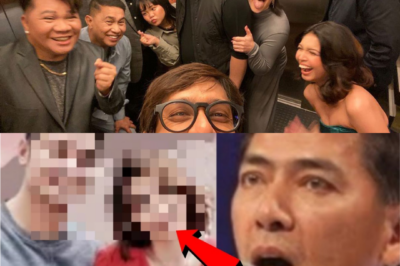Nora Aunor’s ascendance to becoming a National Artist from that little brown girl who sold water along the railroad tracks could have been one compelling story to tell.
But PNoy would not hear any of it.
Apparently, it is a narrative that does not have a place in his over-all worldview of daang matuwid.
My hometown Buhi in Camarines Sur is just beside Iriga City, the place of birth of Nora. Her legendary rise to fame is a collective story for every Bicolano, an iconic narrative to which we would all associate with. Although not all Bicolanos are Noranians, she was our region’s pride, together with Eddie Garcia, Elizabeth Oropesa, Imelda Papin and many more. But Nora summed it up for all of us.
And her story resonated with the rest of the Pinoys. After all, it was a story that ordinary, not-so-perfect people can relate with. Unlike Vilma, she was not fair-skinned, city-bred and middle class. Unlike Sharon, she is not from a political clan. And unlike Kris Aquino, she only relied on her sheer talent and not on the fact that she is a Presidential daughter.
And sheer talent she indeed had, from a singing voice that almost came from the depths of her soul, to an acting style that relied on her eyes as a window to evoke every pain and joy, every failure and triumph, every suffering and redemption. Her art, like those of other great artists, is in fact honed by the very life she lived, a tumultuous journey of an innocent girl from the province braving the complex, sometimes predatory, world of the city and of show business.
An artist who only knows joy would only create one-dimensional fantasies, perhaps a painting of a flower in still life. It is those artists who endure the pain of life who produce creations that are both authentic and meaningful, as we saw in Nora’s performances, from “Bona,” to “Minsay Isang Gamu-gamo,” to “Merika,” and of course, to “Himala” and many more. From among her art emerged two iconic declarations that have been appropriated as discourses of resistance, if not as a mechanism to shame the powerful. “My brother is not a pig” became a mantra for resistance against marginalization, while “walang himala” became a discursive slap on the faces of those who are afflicted with a messiah complex, including even those who believe only they can save our country from the corruption festering it.
And her corpus of work, her filmography, the many awards she received, and her iconic presence in the creative world that collectively represents our talents as Filipinos, were already vetted by her peers in the art community through a rigorous process. And she emerged from this process with the distinction of garnering the highest number of points from among those who vied for the honor.
Nora Aunor is not perfect. She was objectified by a world that made her a spectacle, but thanks to her talent, she survived such objectification by using her art as her refuge. And indeed, many of her failures were precisely because of how she was used by others, as a cash cow, as a talent, as a representation for nation-building, as a symbol of regional or national pride, and as a campaigner during elections. There were just too many burdens placed on her, and what matters most is not how she fell carrying those burdens, but on how she rose up again. Many of the choices she made may not have been stellar examples for sainthood, but for crying out loud, she was not being considered for canonization in a theological sense, but in an artistic sense.
In fact, it is from her painful life that she gave us an art that ordinary people can relate with. She did not produce poems, short stories and novels that only the learned could appreciate. She did not paint pieces displayed in museums that only the elites who have time and resources can visit. She did not create music or dance which are so stylized for the appreciation of the cultured and the polished.
Her music, her films were all accessible to the masa.
And the least that we could have done was to celebrate such form of creating, such distinguished representation of an art which others like her would call as their own because it came from someone like them—unschooled, imperfect, brown but oozing with talent.
After all, we have literally an explosion of talents like her, from bar singers and bands scattered in the diaspora, in cruise ships, to grassroots fashion designers a.k.a. modistas, to folk artists weaving the Ilokano blankets and the T’boli tinalak, things which elite art gate keepers would not accept as art.
The elevation of Nora Aunor to become a National Artist could have been a milestone in our country’s art history, for it would have been a celebration of art appreciated from below, an art that represented the ordinary and every day.
And this celebration is what this animal called “presidential prerogative” has denied a space.
PNoy, notwithstanding the fact that the vetting bodies have already indorsed Nora Aunor, used such prerogative to literally tell her that she can’t be called one of the nation’s artists, and when the nation dared ask why can’t he name Nora as such, for a while the only response he gave, which was declared through his spokesperson, was the simple “because I am the President” line. It is only recently that he pointed out that it is Nora’s record of drug arrest in the US as his basis.
At the time that a reason was not being provided, I could not simply fathom how someone who mouths daang matuwid as premised on transparency and accountability, and who declared as mantra the image of a servant dedicated to serve the citizens as his boss, could in fact refuse to provide his bosses looking for an explanation an answer.
And now that an answer is provided, I am equally at a loss at the logic of not honoring an artist for her art because of a record of a drug arrest which was later on, as records would show, was thrown out.
And speaking of addiction, many would even argue that smoking is also considered as an addiction.
I, and many others, have a fundamental problem with this moralistic position. My discomfort, and perhaps those of others as well, stems from the fact that I respect the world of art as one so different from religion, and that the vocation of creating art is sometimes even more enabled by crises, challenges, quirks and is energized by the contentious domains of identity politics.
The fact that a morally upright life is not part of the criteria, and the fact that Nora’s life, which is an open book, has already passed the judgment of her peers, should put in its proper place in the side lines, worthy to be ignored, this remnant of the Victorian notion of a saintly artist.
Hence, one could not be blamed to entertain another set of speculations on the real reason, which is now directly venturing into the political domain. And the discourse coming from this angle is painting the President as petty and vindictive, for allegedly refusing to forgive Nora for committing two political sins against the Aquino clan. First is when she campaigned for Marcos during the 1986 Snap Elections, where she even sang in one of the campaign rallies the song “We don’t need another hero.” And second, when she sided with Senator Manny Villar in the 2000 Presidential elections.
And still others are even speculating that maybe this was all intended as a smoke-screen, a diversionary tactic. Conscious of the uproar that will be caused by a Presidential veto on Nora’s nomination, Malacanang may have deliberately just simply did it to divert the attention of the public away from the PDAF scandal, before it begins to incinerate even close Presidential allies.
It simply pains me to ask how PNoy could deny Nora Aunor what is due her. As a son of two political icons who were persecuted by a dictator, and as someone who probably have lived a difficult life himself during the dictatorship, he should have at least understood how difficult it is to make a name in a world where the stereotype of success is dictated by images of being educated and fair-skinned. As someone who was repressed by traditional dictatorial political power, he should have had the sympathy for those who were subjected to the repressive politics of dominant constructs dictating over preferred identity templates.
As someone who has been denigrated as lacking in talent, but nevertheless has become the highest official of the land, PNoy should have had empathized with the narrative of a little brown girl who simply used her talents so that she can cross the bridge from the life of selling water in the tracks of a provincial railroad, to a life, tumultuous and problematic as it may have been, that earned for her the label of being our one and only, original “superstar.”
PNoy, if one believes stories, is not that all perfect either. But he passed through the vetting of a political process that chose to be blind to his personality flaws and his deep dark secrets. To expect that Nora should possess a higher standard for becoming National Artist, when it is clear that it is not even part of the criteria, is simply unfair. And denying her such honor when the vetting process, which involved the judgment of her peers in the art community, was not blind to Nora’s flaws, and has already considered it in its deliberation, and still gave her the highest vote, is simply unjust.
Nora was able to wing it through a life of difficulty. It was her art that both helped her through it all, and was created by it. She was already a national artist, even without the name. All she needed was for the state to recognize this.
In her journey towards becoming a National Artist, her stars, no matter how challenging, were kind to her. In fact, she passed the rigorous test from those who understand what art is. And the nation, who understood and related to her art, would have celebrated.
Unfortunately, this was not enough for the President.
News
Katherine Bernardo Finally Reveals the Irresistible Traits of Alden Richards That Won Her Admiration—Is There More to Their Bond Than Friendship? (VIDEO)
The Traits of Alden Richards That Katherine Bernardo Admires In 2019, the on-screen partnership of Katherine Bernardo and Alden Richards…
Kris Aquino Wants to Give Bimby to James Yap, But He Doesn’t Want to Accept?
Kris Aquino Wants to Give Bimby to James Yap, But He Doesn’t Want to Accept? In a surprising development that…
UNBELIEVABLE: NAGULAT SI VIC SOTTO SA PAGPAPAKILALA NG BAGONG HOST NG EAT BULAGA! nakakagulat na pagkakakilanlan
YOU WON’T BELIEVE IT! VIC SOTTO SURPRISES BY INTRODUCING EAT BULAGA’S NEW HOST! A shocking change in the history of…
Andrea Brillantes NAGSALITA NA! sa diumano’y RELASYON nila ni Daniel Padilla (VIDEO)
Andrea Brillantes SPEAKS OUT! on Alleged Relationship with Daniel Padilla Andrea Brillantes has officially addressed the rumors surrounding her involvement…
UNSEEN FOOTAGE! Reaksyon ni Kathryn Bernardo di Kinaya KILIG ng SULYAPAN ni Andres Muhlach sa Stage (VIDEO)
BREAKING NEWS: UNSEEN FOOTAGE! Kathryn Bernardo’s Reaction Says It All—Can’t Handle the KILIG from Andres Muhlach’s Gaze on Stage! A…
Inside the Family Feud Frenzy: Kathryn & Alden’s Unseen On-Set Antics!
Behind the Scenes of Family Feud: Kathryn Bernardo and Alden Richards Shine In an exciting behind-the-scenes look at the popular…
End of content
No more pages to load












